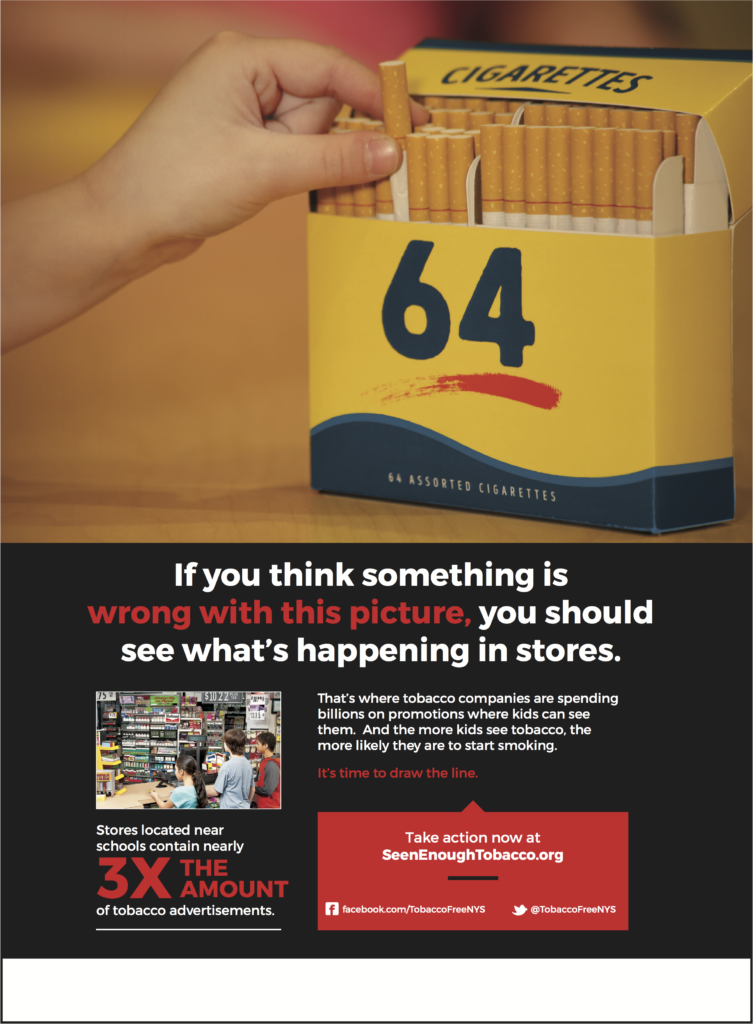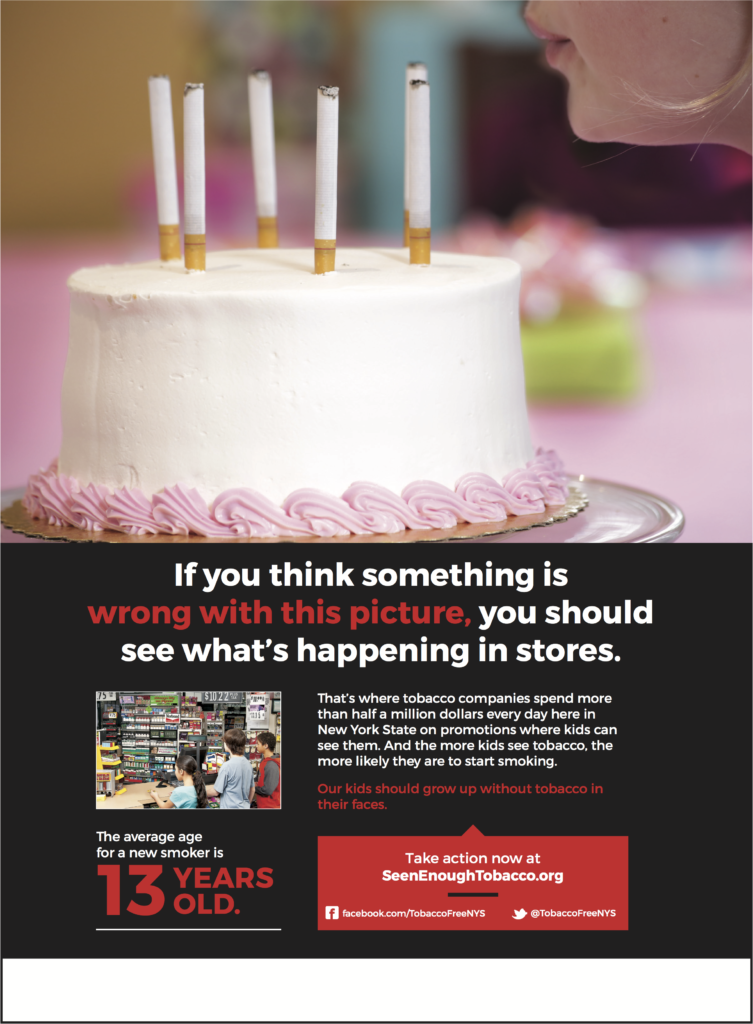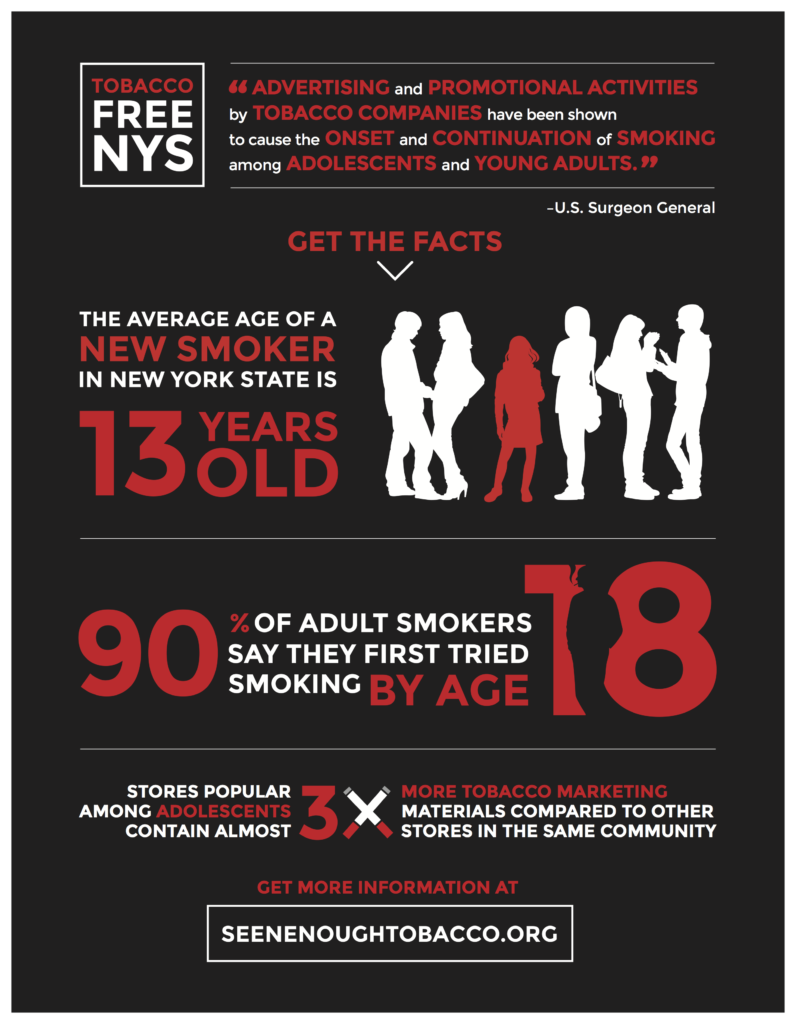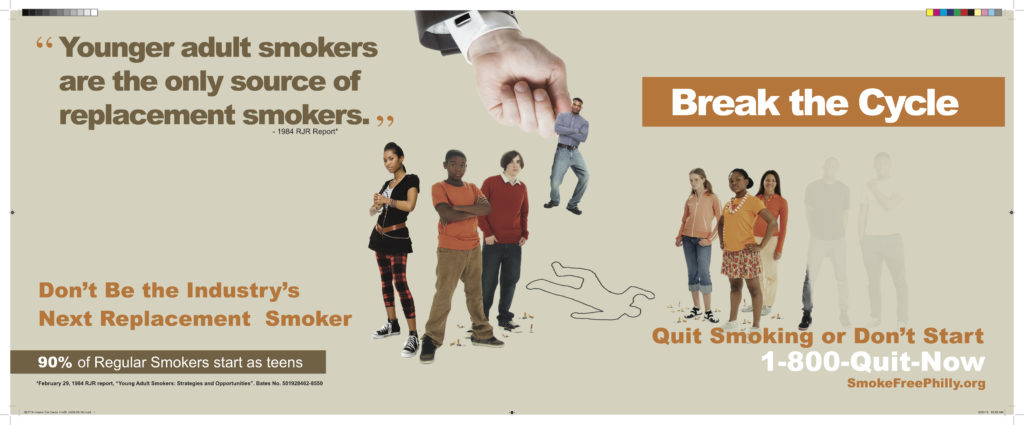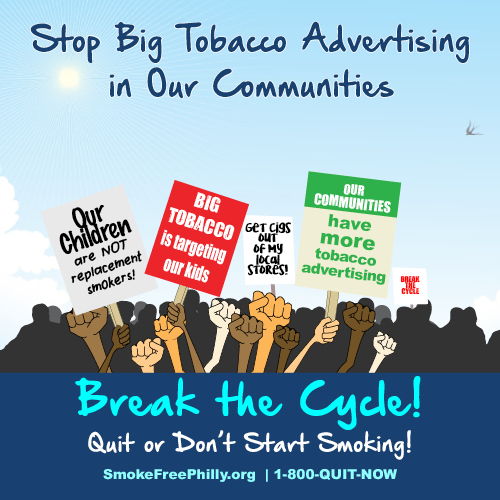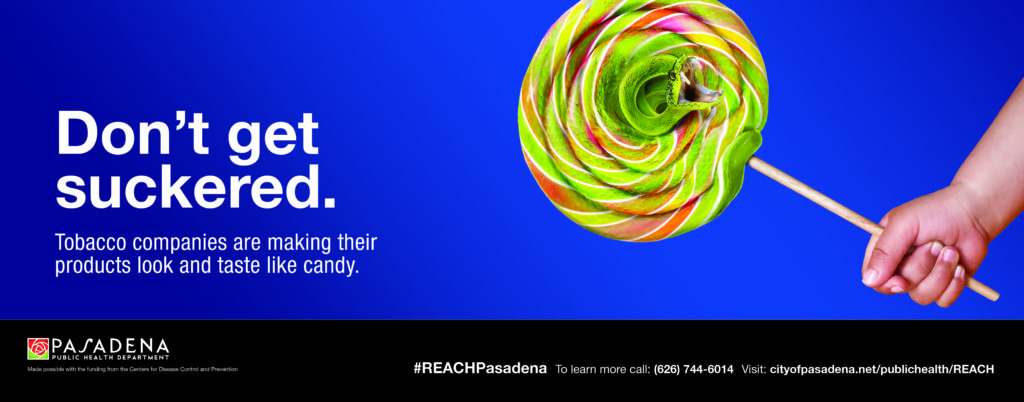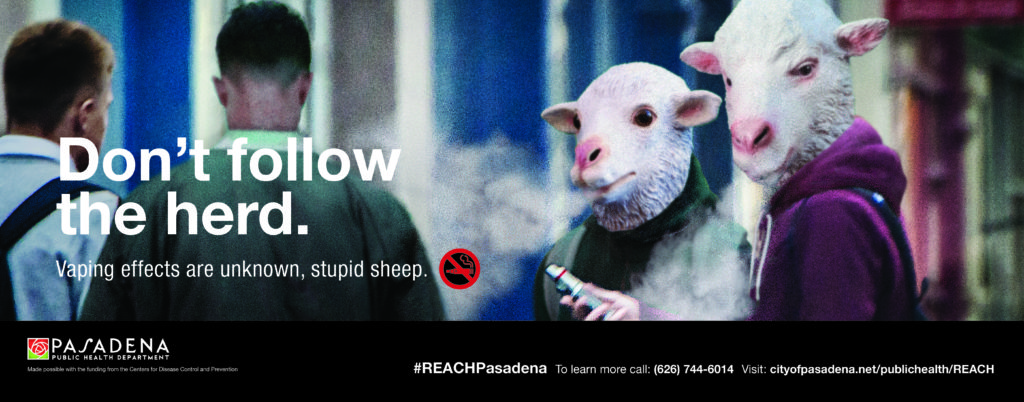Effective media campaigns can be a major force to promote positive behavior change. Media helps to build awareness and establish support for your campaign.
Print ads are a piece of an effective media campaign. They can be informational about the campaign and can also incorporate health warnings. They can be easily distributed as posters or online; they can also be turned into billboards, gas pump toppers, magnets, bumper stickers, and other materials. Print ads can contribute to mass media campaigns that have the potential to influence attitudes about point-of-sale (POS) advertising and increase support for policies that restrict tobacco promotion at the POS.[1]
Below, find print media campaigns for Tobacco Retailer Licensing, Building Community Awareness about POS marketing, product-specific risks, and more.
Licensing Campaigns
The print ads below can be used to advocate for licensing in your community. Click on the ad to download the high resolution image. Currently the ads say ‘North Carolina’, but that could be easily changed to suit your community’s needs.
These posters were developed by a UNC Gillings School of Global Public Health Capstone Team: Meredith Kamradt, Amber Anderson, Linnea Warren, and Jennifer Brown working with Dr. Kurt Ribisl.
Building Community Awareness
A recent study showed lower support for point-of-sale tobacco control policies than for other areas of tobacco control. Building community awareness for POS policies that may be unfamiliar to the general U.S. population and building support for POS policies at the local level are ways to increase overall public support for national policy change.
E-Cigarettes
The print ads below, developed by the Tobacco Free Coalition for San Francisco’s #CurbIt campaign, can be used to raise awareness about the potential harms of e-cigarettes and new e-cigarette use policies in your community. Learn more at sftobaccofree.org.




Lethal Lure
The American Lung Association in Minnesota’s “Lethal Lure” Campaign developed a tool kit to educate the general public and elected officials about the many tactics the tobacco industry uses to target youth and adults at the point of sale. The tool kit includes 1 page issue briefs on a number of point of sale tobacco control topics. Each includes:
 An overview of the issue
An overview of the issue- Public health concerns
- Potential regulatory options at the local level
You can download the complete Lethal Lure Tool Kit in full or each issue 1-pager individually:
- Electronic Cigarettes
- Sampling: Hookah Bars & Vaping Lounges
- Candy or Tobacco
- Tobacco Promotion & Advertising
- Licensing & Zoning
- Glossary of Terms
Seen Enough Tobacco
New York State’s “Seen Enough Tobacco” campaign aims to educate New Yorkers about the dangers of tobacco industry marketing in retail stores, and the effect that this marketing has on New York’s youth. Learn more about the campaign at SeenEnoughTobacco.org.
Break the Cycle
Philadelphia’s “Break the Cycle” media campaign, which started July 1, 2016, is designed to reveal the tobacco industry’s role in continuing the tobacco epidemic in Philadelphia. Youth, racial and ethnic minorities, and low-income communities are particularly vulnerable to targeted tobacco industry marketing and advertising. These same communities also have more tobacco related illnesses and deaths. Low-income and neighborhoods with high populations of people of color have higher concentrations of advertising in their neighborhoods and are more likely to become replacement smokers. Learn more about the campaign.
REACH
Funded by the Centers for Disease Control and Prevention, the City of Pasadena Public Health Department launched an anti-smoking media campaign in November 2016 as part of the Pasadena REACH (Racial and Ethnic Approaches to Community Health) Project to combat the use of electronic cigarettes, flavored tobacco products, and mentholated cigarettes among Hispanic/Latinos and African Americans in the city, focusing in Northwest Pasadena. The Pasadena REACH ads can be found throughout the city in the interior placards inside Pasadena Transit buses, in bus shelter displays, and through social media starting mid-November. Learn more here.
The Cigar Trap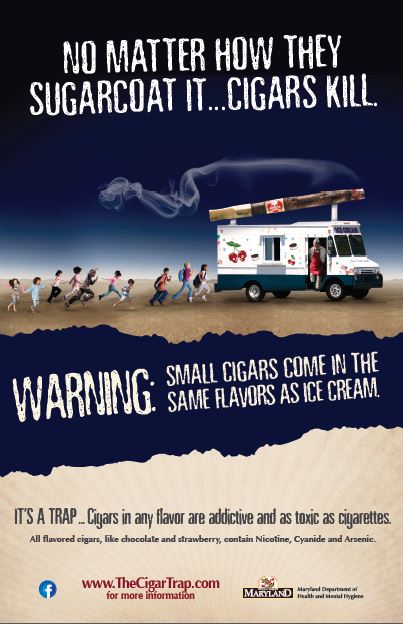
The Maryland Department of Health and Mental Hygiene developed an education and awareness campaign around the issues associated with the merchandising and promotion of cigars. In Maryland in 2010 14.1% of high school students under 18 reported smoking cigarettes in the last 30 days. 13.9% reported smoking cigars. This represents more than an 11% increase in cigar use since 2000. The Cigar Trap highlights this shift in usage and the associated dangers. The campaign includes facts sheets to define the issue, solutions that can be pursued, and media resources associated with the campaign. Media resources can also be accessed through the CDC’s Media Campaign Resource Center.
Media Campaign Resource Center
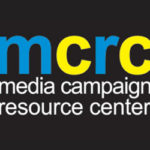
To find more print campaign ideas, examples, and resources to use, visit the Center for Disease Control and Prevention’s Media Campaign Resource Center.




